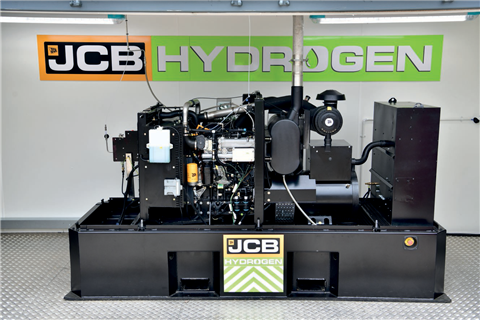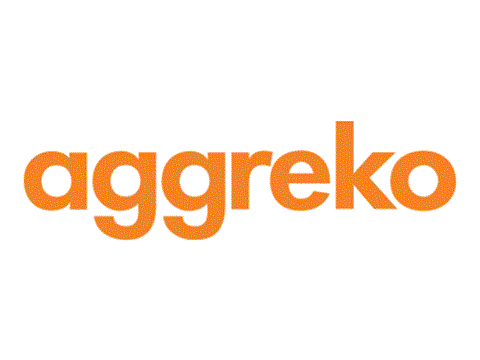10 ways to join the hydrogen power revolution
23 September 2021
Interest in the use of hydrogen has soared over the past few years as the construction industry races to reduce its carbon footprint.
Named by the World Economic Forum as one of the top 10 most emerging technologies in 2020, hydrogen is increasingly being suggested as a vital factor in a successful move to a net-zero world by 2050.
We take a look at a roundup of recent initiatives that are taking shape across the industry:

JCB’s new Hydrogen engine
The UK-based OEM has built and is currently testing a prototype backhoe loader with a new hydrogen motor. JCB is using and adapting established engine technology with readily available components.
The result is a backhoe loader than can do everything its traditional diesel powered relative can do and behaves in the same way – with fuel costs that are expected to be similar to diesel.
Speaking about JCB’s work on a zero CO2 emissions hydrogen combustion engine, the firm’s chief innovation and growth officer at JCB, Tim Burnhope, told International Construction: “We were thinking of the electric job site; now we are thinking of the hydrogen job site.”
He was emphasising just how quickly strategies are changing as construction battles to minimise its environmental impact.

Deutz and DLR join forces
Deutz and The German Aerospace Center (Deutsches Zentrum für Luft- und Raumfahrt (DLR)) are working together to develop new ideas and solutions for the operation of construction equipment and agricultural machinery using hydrogen. Representatives of the two partners signed a cooperation agreement to this effect last month.
The alliance between engine maker Deutz and the German Aerospace Center is a product of the DLR.InnovationHub, which brings together representatives from the worlds of research and commerce.

Cummins-led project secures £14.6 million
A project led by Cummins has been given £14.6 million to develop a hydrogen-fuelled engine for commercial transport at the company’s Darlington, England plant.
It is part of a package of almost £92 million combined UK government and industry funding which has been committed to various projects.

TAQA Power and MAN partner up
MAN Energy Solutions has signed a memorandum of understanding with TAQA Power to develop a pilot project to produce green hydrogen to fuel domestic tourist buses in Egypt.
The agreement sets the stage for MAN Energy Solutions to provide technical information to TAQA Power, a subsidiary of TAQA Arabia, to build a facility which uses electrolysis to make green hydrogen.
The announcement comes in the wake of Egypt’s president, Abdel-Fattah El-Sisi, urging the establishment of an integrated strategy for the production of green hydrogen in the north African state in light of the growing international interest in the alternative fuel. The aim is to empower Egypt to generate and use hydrogen through renewable energy instead of fossil fuels.

Manitou Group raises the bar
In an exclusive interview with Access International last month, Manitou Group’s president and CEO Michel Denis disussed low-carbon and sustainability initiatives.
One example of the many steps the company is taking is its Ecostop, which automatically stops the engine and the associated timer when the machine is idling. An example of a much larger step will be the launch of a prototype hydrogen-powered telehandler in 2022.

Doosan Heavy Industries’ turbine pledge
Under the plan, the companies will contribute to achieving the goal of carbon neutrality by 2050 and promote Korea’s domestic hydrogen turbine engine.
With the agreement, Doosan Heavy plans to develop hydrogen combustors and hydrogen turbines based on domestic technologies, and secure technologies to mass-produce related components. Korea Western Power will promote the application of hydrogen combustors and hydrogen turbines.
The two companies agreed to closely cooperate in building a basis for the demonstration of small and medium-sized 100% hydrogen-fueled turbines, currently being developed by Doosan Heavy. The hydrogen turbine technologies to be secured will be applied to new power plants and the conversion of old thermal power plants into hydrogen power plants, pursued by Korea Western Power.
In addition, the two companies agreed to join efforts to create a hydrogen ecosystem, helping small and medium-sized enterprises develop hydrogen turbine technologies and advance into domestic and overseas markets.

Power Machines opens doors for hydrogen technologies
Russian power engineering company Power Machines said it has created a Center for Hydrogen Technologies to strengthen the company’s position in this area and master the technologies of storage, transportation, production and consumption of hydrogen.
The Center’s specialists will carry out research and development in this area, as well as coordinate the interaction between Power Machines and external research organizations, the company said.
In accordance with a long-term plan for the development of hydrogen technologies, the company expects to offer the market solutions in the field of electrolysis and hydrogen storage systems by 2024, with more to follow.

Siemens Mobility’s hydrogen train
Siemens Mobility it to trial a new hydrogen-powered train on passenger services in the Free State of Bavaria, southwest Germany.
The two-car train can travel up to 800km and is equipped with a hydrogen traction drive. It comprises two fuel cells on its roof and is fitted with lithium-ion batteries manufactured by Sharp underneath its floor.
According to developer Siemens, which recently signed a multi-billion-dollar-contract for sustainable trains with US-based passenger railroad service Amtrak, the new vehicle is based on its Mireo Plus H train and can be operated on non-electrified rail lines “like any conventional train but without local emissions”.

Zenith’s 3.2 GW hydrogen facility
U.S.-based Zenith Energy and the Irish firm EI-H2 said the green energy facility at Bantry Bay, Ireland, has the potential to reduce Irish carbon emissions by 2.4 million tons per year, which represents the equivalent of the carbon emissions of a quarter of all Irish homes.
It will operate alongside Zenith Energy’s existing Bantry Bay Terminal, and will be one of the largest of its kind in the world, the companies said.
Bantry Bay was chosen as the location for a facility of this scale given its proximity to some of the most productive off-shore locations for wind-generated electricity.
The first phase of the project will see the construction of a scalable green hydrogen production facility, up to 2.7 GW in capacity. The second phase involves the construction of a 500 MW green ammonia facility, using the green hydrogen from the first phase. The green energy produced by the facility will be used both domestically and internationally, providing carbon-free alternatives to help reduce the country’s carbon footprint, and to put Ireland on the green energy export map.

Aggreko develops its first hydrogen genset
Aggreko is accelerating its investments in hydrogen technology with the development of a demonstration 50 kVA hydrogen combustion generator.
The first one has been tested and Aggreko is now building 10 additional units that will be supplied to customers and partners “to test and validate hydrogen as an energy carrier in temporary power”. The sets will be ready for customer applications in the second half of this year.
The genset - which has been developed with cleantech specialist CMB.TECH, based in Antwerp, Belgium - is Tier 4F/Stage V compliant without aftertreatment and results in near to no NOx emissions.
In addition, Aggreko has partnered with Netherlands fuel cell company Nedstack to build a fuel cell demonstration unit that will integrate zero-emission hydrogen technology with a battery storage unit.
STAY CONNECTED


Receive the information you need when you need it through our world-leading magazines, newsletters and daily briefings.
CONNECT WITH THE TEAM











